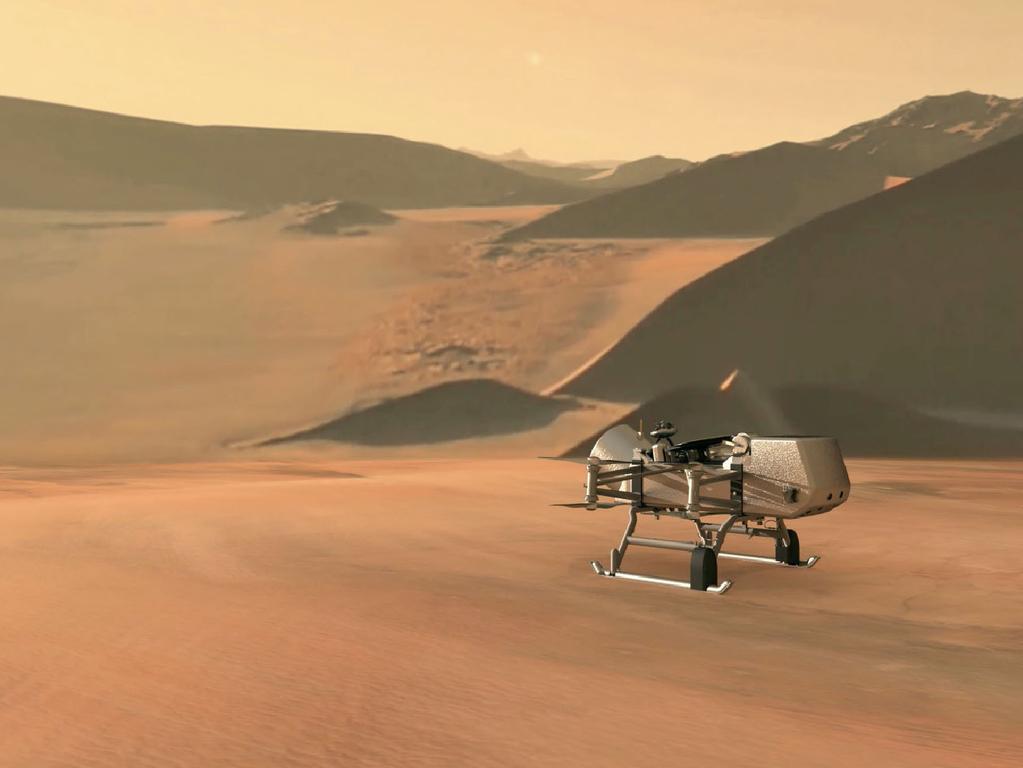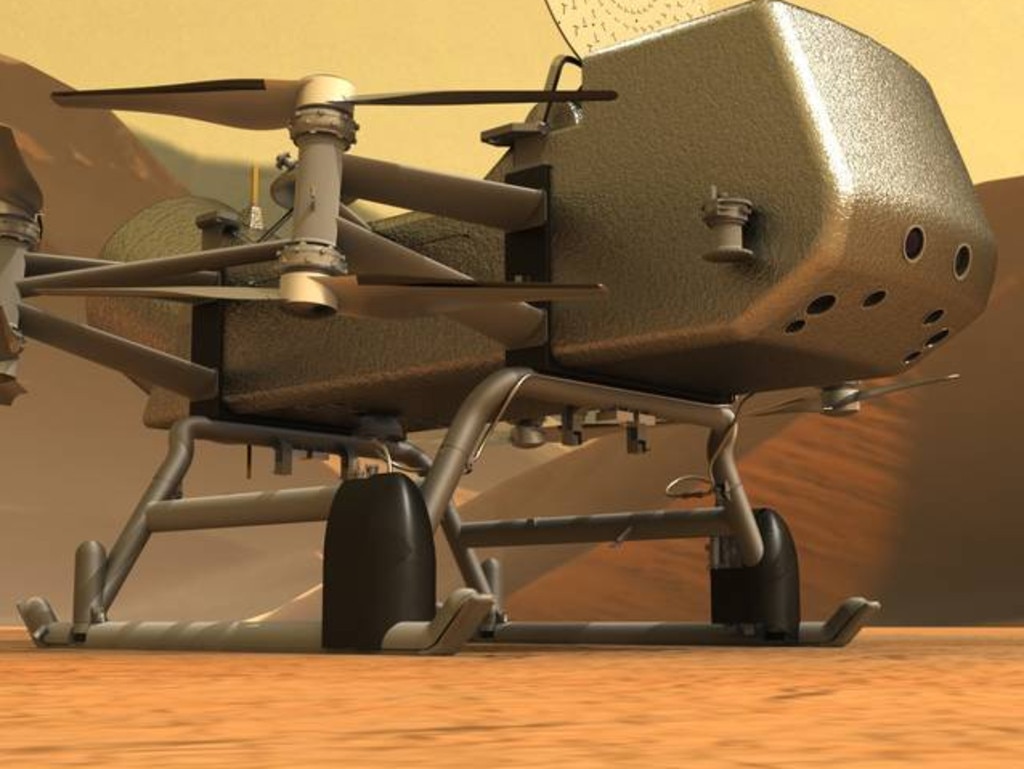COVID-19 delays NASA Dragonfly mission to Titan until 2027
The world is in the grip of a global pandemic and it’s stopping NASA going to search for another planet that could support life.
A plan to send a drone to search for “the building blocks of life” on Saturn’s moon has been delayed by a year due to “external” factors including COVID-19.
NASA wants to send a drone to Saturn’s moon Titan to investigate its environment and progression, a project dubbed “Dragonfly”.
For the first time, the US space agency plans to use a ”multi-rotor vehicle” (which you might know as a drone) to fly around the planet-sized moon.
Titan is the second biggest moon in our solar system (behind one of Jupiter’s moon Ganymede) and is bigger than the planet Mercury.
RELATED: Incredible discovery on Venus

RELATED: ‘Sad, cold, lonely’ end to universe
It has a dense atmosphere and an icy crust: The former makes it easier to fly on Titan than Earth but the latter makes it too cold for some drones to work, which are challenges for the development team to overcome.
They’ll now have until 2027 to do it after plans to launch in 2026 were pushed back.
NASA maintains the delay won’t require any changes to the mission and won’t affect its ability to gather and return scientific observations from Titan.
“The decision to pursue the alternative launch date is based on factors external to the Dragonfly project team, including COVID-19’s impact on the Planetary Science Division’s budget,” the agency said.
RELATED: Mysterious space radio bursts return

RELATED: Australian first on ice after mishap
NASA’s director for the planetary space division Lori Glaze said the agency still reckons a successful mission will go ahead despite the delay.
“NASA has the utmost confidence in the Dragonfly team to deliver a successful mission that conducts compelling science,” Ms Glaze said.
“Dragonfly will significantly increase our understanding of this richly organic world and help answer key astrobiology questions in our search to understand the processes that supported the development of life on Earth.”

RELATED: Astonishing Aussie photo not what you think
In another NASA first, Dragonfly plans to take advantage of NASA’s dense atmosphere to conduct “repeatable and targeted” tests on surface materials.
The mission will survey dozens of locations around Titan’s icy surface, and because it can fly more easily, Dragonfly’s drone will hopefully be able to transport its entire scientific payload to multiple locations in order to “characterise the habitability of Titan’s environment and investigate the progression of its prebiotic chemistry”.



